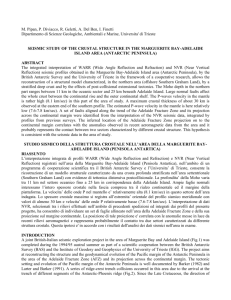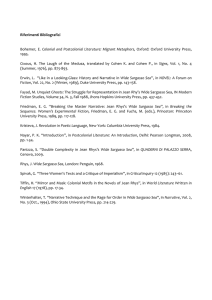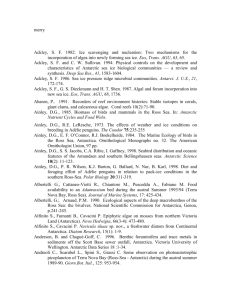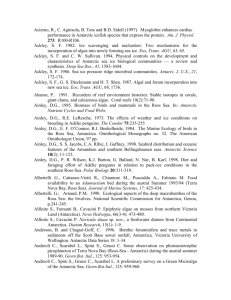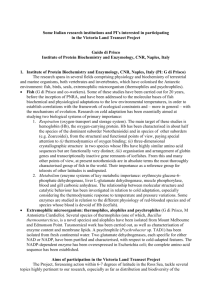stratigraphical results related to
advertisement
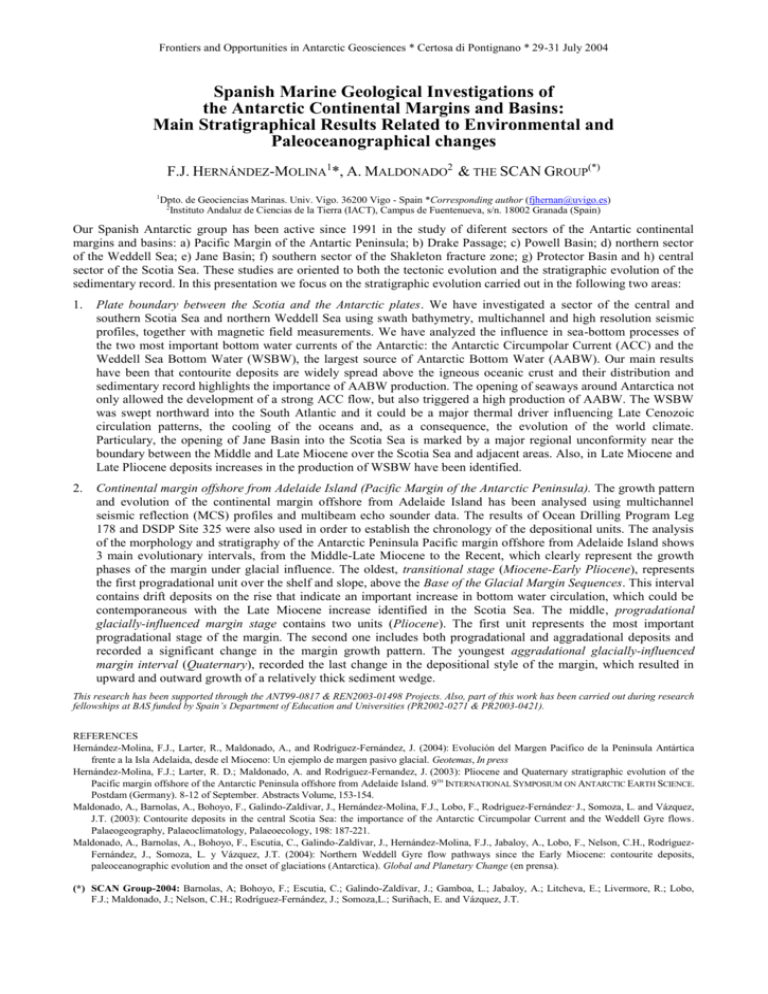
Frontiers and Opportunities in Antarctic Geosciences * Certosa di Pontignano * 29-31 July 2004 Spanish Marine Geological Investigations of the Antarctic Continental Margins and Basins: Main Stratigraphical Results Related to Environmental and Paleoceanographical changes F.J. HERNÁNDEZ-MOLINA1*, A. MALDONADO2 & THE SCAN GROUP(*) 1 Dpto. de Geociencias Marinas. Univ. Vigo. 36200 Vigo - Spain *Corresponding author (fjhernan@uvigo.es) 2 Instituto Andaluz de Ciencias de la Tierra (IACT), Campus de Fuentenueva, s/n. 18002 Granada (Spain) Our Spanish Antarctic group has been active since 1991 in the study of diferent sectors of the Antartic continental margins and basins: a) Pacific Margin of the Antartic Peninsula; b) Drake Passage; c) Powell Basin; d) northern sector of the Weddell Sea; e) Jane Basin; f) southern sector of the Shakleton fracture zone; g) Protector Basin and h) central sector of the Scotia Sea. These studies are oriented to both the tectonic evolution and the stratigraphic evolution of the sedimentary record. In this presentation we focus on the stratigraphic evolution carried out in the following two areas: 1. Plate boundary between the Scotia and the Antarctic plates. We have investigated a sector of the central and southern Scotia Sea and northern Weddell Sea using swath bathymetry, multichannel and high resolution seismic profiles, together with magnetic field measurements. We have analyzed the influence in sea-bottom processes of the two most important bottom water currents of the Antarctic: the Antarctic Circumpolar Current (ACC) and the Weddell Sea Bottom Water (WSBW), the largest source of Antarctic Bottom Water (AABW). Our main results have been that contourite deposits are widely spread above the igneous oceanic crust and their distribution and sedimentary record highlights the importance of AABW production. The opening of seaways around Antarctica not only allowed the development of a strong ACC flow, but also triggered a high production of AABW. The WSBW was swept northward into the South Atlantic and it could be a major thermal driver influencing Late Cenozoic circulation patterns, the cooling of the oceans and, as a consequence, the evolution of the world climate. Particulary, the opening of Jane Basin into the Scotia Sea is marked by a major regional unconformity near the boundary between the Middle and Late Miocene over the Scotia Sea and adjacent areas. Also, in Late Miocene and Late Pliocene deposits increases in the production of WSBW have been identified. 2. Continental margin offshore from Adelaide Island (Pacific Margin of the Antarctic Peninsula). The growth pattern and evolution of the continental margin offshore from Adelaide Island has been analysed using multichannel seismic reflection (MCS) profiles and multibeam echo sounder data. The results of Ocean Drilling Program Leg 178 and DSDP Site 325 were also used in order to establish the chronology of the depositional units. The analysis of the morphology and stratigraphy of the Antarctic Peninsula Pacific margin offshore from Adelaide Island shows 3 main evolutionary intervals, from the Middle-Late Miocene to the Recent, which clearly represent the growth phases of the margin under glacial influence. The oldest, transitional stage (Miocene-Early Pliocene), represents the first progradational unit over the shelf and slope, above the Base of the Glacial Margin Sequences. This interval contains drift deposits on the rise that indicate an important increase in bottom water circulation, which could be contemporaneous with the Late Miocene increase identified in the Scotia Sea. The middle, progradational glacially-influenced margin stage contains two units (Pliocene). The first unit represents the most important progradational stage of the margin. The second one includes both progradational and aggradational deposits and recorded a significant change in the margin growth pattern. The youngest aggradational glacially-influenced margin interval (Quaternary), recorded the last change in the depositional style of the margin, which resulted in upward and outward growth of a relatively thick sediment wedge. This research has been supported through the ANT99-0817 & REN2003-01498 Projects. Also, part of this work has been carried out during research fellowships at BAS funded by Spain’s Department of Education and Universities (PR2002-0271 & PR2003-0421). REFERENCES Hernández-Molina, F.J., Larter, R., Maldonado, A., and Rodríguez-Fernández, J. (2004): Evolución del Margen Pacífico de la Península Antártica frente a la Isla Adelaida, desde el Mioceno: Un ejemplo de margen pasivo glacial. Geotemas, In press Hernández-Molina, F.J.; Larter, R. D.; Maldonado, A. and Rodríguez-Fernandez, J. (2003): Pliocene and Quaternary stratigraphic evolution of the Pacific margin offshore of the Antarctic Peninsula offshore from Adelaide Island. 9TH INTERNATIONAL SYMPOSIUM ON ANTARCTIC EARTH SCIENCE. Postdam (Germany). 8-12 of September. Abstracts Volume, 153-154. Maldonado, A., Barnolas, A., Bohoyo, F., Galindo-Zaldívar, J., Hernández-Molina, F.J., Lobo, F., Rodríguez-Fernández,, J., Somoza, L. and Vázquez, J.T. (2003): Contourite deposits in the central Scotia Sea: the importance of the Antarctic Circumpolar Current and the Weddell Gyre flows. Palaeogeography, Palaeoclimatology, Palaeoecology, 198: 187-221. Maldonado, A., Barnolas, A., Bohoyo, F., Escutia, C., Galindo-Zaldívar, J., Hernández-Molina, F.J., Jabaloy, A., Lobo, F., Nelson, C.H., RodríguezFernández, J., Somoza, L. y Vázquez, J.T. (2004): Northern Weddell Gyre flow pathways since the Early Miocene: contourite deposits, paleoceanographic evolution and the onset of glaciations (Antarctica). Global and Planetary Change (en prensa). (*) SCAN Group-2004: Barnolas, A; Bohoyo, F.; Escutia, C.; Galindo-Zaldívar, J.; Gamboa, L.; Jabaloy, A.; Litcheva, E.; Livermore, R.; Lobo, F.J.; Maldonado, J.; Nelson, C.H.; Rodríguez-Fernández, J.; Somoza,L.; Suriñach, E. and Vázquez, J.T.
